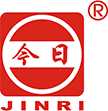How to Organize Documents Using Box Files?
Keeping paperwork tidy and easy to access is essential for both office and home environments. Box files provide one of the simplest and most efficient ways to store and organize documents systematically. They protect papers from dust, prevent clutter, and allow for quick retrieval when needed. Below is a complete guide to organizing documents using box files efficiently.
Understanding Box Files
Box files are sturdy storage containers, often made from cardboard, plastic, or fiberboard, designed to hold large quantities of documents vertically. Unlike regular folders, they feature a strong spine and a lever arch or clip mechanism to keep papers secure. The front edge usually includes a label for identifying the contents, making it easy to categorize files by topic, department, or date. Their uniform shape also makes them ideal for stacking on shelves, giving your workspace a clean and professional appearance.
Step 1: Sort and Categorize Your Documents
Before placing anything into a box file, start by sorting all documents into logical categories. Common groups include invoices, contracts, correspondence, project reports, manuals, or receipts. Sorting can also be done chronologically or by department. The key is to choose a system that mirrors how you search for documents in daily work. Once sorted, remove duplicates and outdated materials to minimize unnecessary clutter.
Step 2: Label and Group by Type
Labeling is crucial for maintaining order. Each box file should have a clear and concise title written on its spine, such as “2024 Financial Records” or “Client Contracts.” If you manage many box files, consider color coding — for example, blue for financial, red for legal, and green for HR documents. Consistent labeling helps everyone in the office find what they need quickly. Inside the box, you can also insert dividers or smaller folders to separate sections for added clarity.
| Label Color | Category Example | Description |
|---|---|---|
| Blue | Accounting & Finance | Budgets, invoices, statements |
| Red | Legal & Compliance | Contracts, permits, licenses |
| Green | Human Resources | Employee records, training files |
| Yellow | Projects | Proposals, progress reports |
Step 3: File Documents Neatly
When placing papers into a box file, make sure they are aligned properly. Use plastic sleeves or inner folders for documents that require extra protection or are frequently referenced. Arrange files vertically to prevent bending or tearing. If using a lever-arch mechanism, punch holes in documents evenly so they sit flat. It’s also advisable to keep frequently accessed documents at the front of the file, while archiving older ones toward the back.
Step 4: Create an Index or Inventory
Maintaining an external index will save significant time in retrieval. This can be a simple digital spreadsheet listing each box file’s title, number, and key contents. For example, Box File No. 5 may include “Supplier Agreements 2021–2022,” while No. 6 contains “Customer Purchase Orders.” By maintaining this reference sheet, you can locate any document within seconds, even if it’s stored off-site or in an archive room.
Step 5: Store Properly for Long-Term Use
Store box files in a dry, clean area away from direct sunlight or moisture to prevent warping or paper damage. If possible, use shelving units that allow files to stand upright without leaning. For larger offices, a dedicated archive room with labeled shelves can further streamline organization. Regular maintenance — such as removing outdated files annually — keeps your system current and efficient.
Step 6: Combine Digital and Physical Organization
Many offices now adopt a hybrid approach by scanning documents before filing the originals. This allows for both physical and digital access. Label digital folders using the same naming conventions as the box files to maintain consistency. When a physical document is archived, record its corresponding digital location to avoid confusion later. This method ensures quick retrieval whether you’re working on-site or remotely.
Benefits of Using Box Files
Organizing documents with box files provides numerous advantages. They save space, enhance workflow efficiency, and improve document security. Employees spend less time searching for paperwork, reducing frustration and improving productivity. Box files also give your workspace a neat and professional look, reflecting well on your company’s attention to detail and organization. In homes, they are equally valuable for keeping tax forms, warranties, and personal documents secure and tidy.
Choosing Quality Box Files
When selecting box files, focus on durability, capacity, and ease of handling. Sturdy materials such as laminated cardboard or polypropylene offer long-term protection against wear and tear. Smooth edges, a solid spine, and strong locking mechanisms ensure that even heavily filled files remain secure. A high-quality lever-arch system allows for frequent use without bending or breaking.
If you’re looking for reliable, professional-grade box files for your office or study, JINRI offers a wide range of stationery products designed for organization and productivity. Their box files are made from durable materials, available in multiple sizes and colors, and are ideal for both business and personal document storage. Visit JINRI Stationery to explore options that combine practicality with elegant design.
Conclusion
Organizing documents with box files is a simple yet highly effective strategy for maintaining order in any workspace. By sorting, labeling, indexing, and storing files systematically, you can create a professional filing system that saves time and improves efficiency. With durable and well-designed products such as those from JINRI, document management becomes an effortless part of your daily routine — keeping your office or home tidy, efficient, and ready for success.



